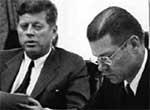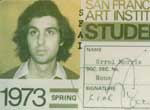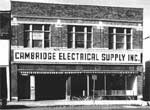An Ad Campaign as Authentic as It Was Appealing
April 18, 2005
By Jonah Bloom
Time was when an American advertiser wanted to stand out, not blend in. When a brewer�s sales pitch was based on research in the field [cut to shot of a bar], not concocted in some fancy marketing school. What next? Tailgaters with cocktail shakers? This is no way to sell ... the High Life.�
That many of America�s marketers muddy instincts with science, shy away from points of difference and kill great creative is not news. Still, I was somewhat surprised last week when Advertising Age magazine�s Jim Arndorfer, who reported the debut of the �High Life man� in 1998, learned Miller was planning to terminate this gem of a campaign.
The fakery in beer ads
In an era when much advertising feels fake, especially brewers� ads, which tend to depict too-preened girlymen prancing around predictably beautiful women, the High Life man has been an honest, authentic campaign that regular beer drinkers could relate to. More young men than ever before are deserting beer for fancy liquors and silly spritzers -- on-premise spirit sales grew an estimated 10% last year, while beer sales declined -- and here was a campaign reminding us real men drink beer. It played perfectly into the cultural backlash against metrosexuality, it spoke to those of us who still aspire to our stoic fathers and grandfathers, who built stuff, who knew stuff.
Equally important in an age of growing consumer control and commercial clutter, it was so perfectly told, arch and entertaining -- the copywriting, as poorly mimicked at the top of this column, sometimes smacked of Mark Twain -- it could engage those who screen, either mentally or technologically, most of the ad dreck aimed at them.
A rare feat of advertising
It was the rare example of a campaign that appealed to young hipsters, and even some frat boys, without alienating the more-mature drinker. Rarer still, it combined art and effectiveness. It was initially commissioned to arrest the downward spiral of discounting to which Miller had succumbed and it did that. When backed with some decent media weight, it delivered a tasty uptick in sales, too.
Recent sales figures have been poor, however, which some blame on the creative, others on the lack of, or poor execution of, media buying, and yet others on distribution issues and the tough beer environment.
No campaign should rest on its laurels: Advertising being an art form, there is always the potential to create a better body of work. And, given Miller is working with Wieden & Kennedy to create the new High Life ads, it is just possible that it will come up with something so fabulous that I will wonder why I ever cared for the old High Life guy�s rugged reflections.
Ignore the accepted marketing wisdom
Many suggested Miller has long thought the High Life ads need to �be younger� or �place more emphasis on the beer�s value,� which is a worrying sign that it didn�t understand High Life man, and may be hankering after some prancing soda-pop starlets. Miller would not be alone in believing that ads have to show the audience that you want to reach. This almost seems to have slipped into the category of accepted marketing wisdom, despite the fact it�s claptrap. Most hipster influencers will shun your brand like a Celine Dion box set if they see it hawked on TV by their supposed peers.
Nostalgia has a powerful effect on the young as well as old. Just ask a 25-year-old about the candy they used to buy when they were kids, or the TV shows they watched, or the first time their dad gave them a beer. At a time when the real enemies of Anheuser-Busch and Miller are the spirits companies, a campaign that reconnects beer to the very essence of manhood seems a brilliant strategy.
The High Life man deserves a promotion, not retirement.
A SAD FAREWELL TO MILLER'S HIGH LIFE MAN







